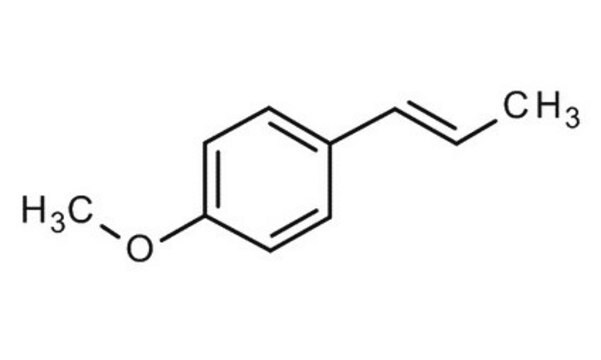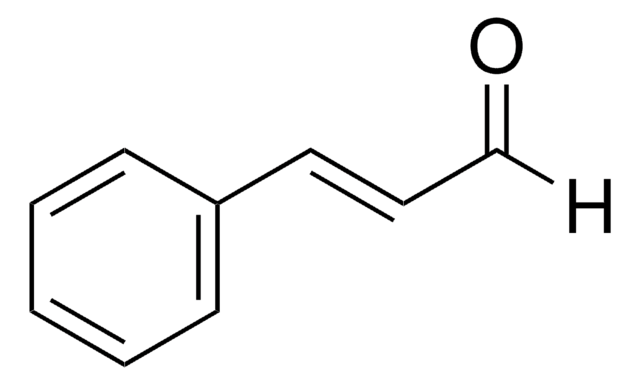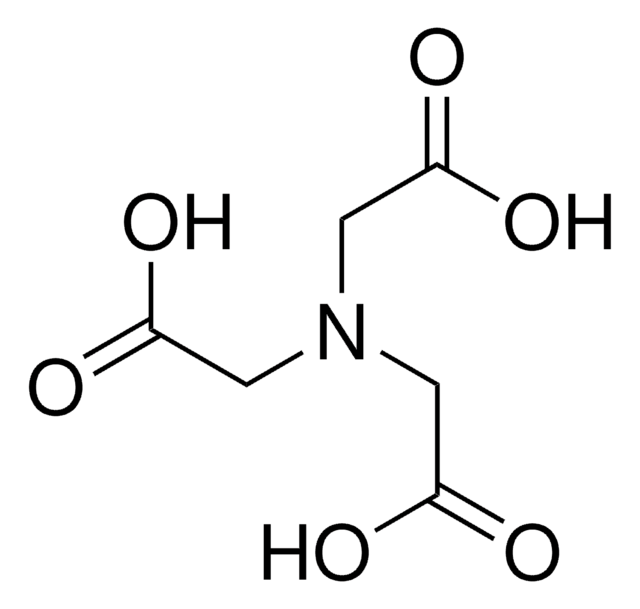W208620
Anethol
natural, 99%, FG
Synonyme(s) :
4-Propenylanisole
About This Item
Produits recommandés
Qualité
FG
Fragrance grade
Halal
Kosher
natural
Agence
follows IFRA guidelines
Conformité réglementaire
EU Regulation 1223/2009
EU Regulation 1334/2008 & 178/2002
FDA 21 CFR 117
Pureté
99%
Composition
contains trans-Anethole
Indice de réfraction
n20/D 1.561 (lit.)
Point d'ébullition
234-237 °C (lit.)
Pf
20-21 °C (lit.)
Densité
0.988 g/mL at 25 °C (lit.)
Application(s)
flavors and fragrances
Documentation
see Safety & Documentation for available documents
Allergène alimentaire
no known allergens
Allergène de parfum
trans-anethole
Propriétés organoleptiques
anise; sweet
Chaîne SMILES
COc1ccc(\C=C\C)cc1
InChI
1S/C10H12O/c1-3-4-9-5-7-10(11-2)8-6-9/h3-8H,1-2H3/b4-3+
Clé InChI
RUVINXPYWBROJD-ONEGZZNKSA-N
Vous recherchez des produits similaires ? Visite Guide de comparaison des produits
Actions biochimiques/physiologiques
Mention d'avertissement
Warning
Mentions de danger
Conseils de prudence
Classification des risques
Aquatic Chronic 2 - Skin Sens. 1
Code de la classe de stockage
10 - Combustible liquids
Classe de danger pour l'eau (WGK)
WGK 2
Point d'éclair (°F)
213.8 °F
Point d'éclair (°C)
101 °C
Faites votre choix parmi les versions les plus récentes :
Déjà en possession de ce produit ?
Retrouvez la documentation relative aux produits que vous avez récemment achetés dans la Bibliothèque de documents.
Les clients ont également consulté
Notre équipe de scientifiques dispose d'une expérience dans tous les secteurs de la recherche, notamment en sciences de la vie, science des matériaux, synthèse chimique, chromatographie, analyse et dans de nombreux autres domaines..
Contacter notre Service technique









